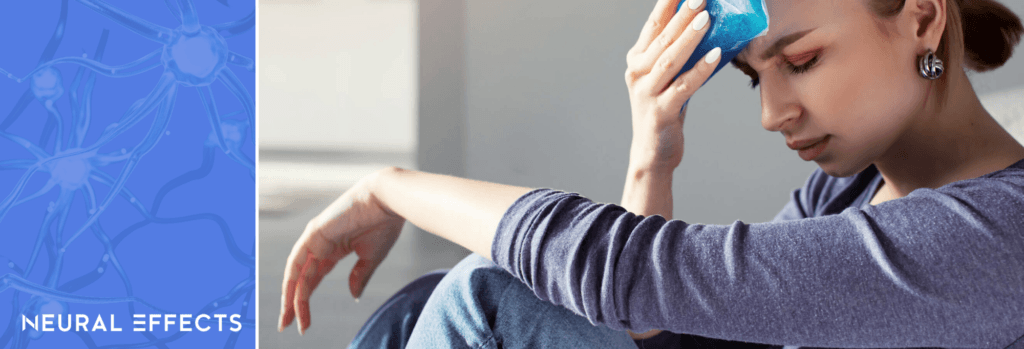While most concussions are not life-threatening, many patients still need first aid immediately after suffering a mild traumatic brain injury (mTBI). They may feel confused and disorientated, experience nausea and vomiting, or have a bleeding cut on their head. If you’re on the scene, there are concrete steps you can take to make sure they’re safe.
Sometimes, the people around the patient — or the patient themselves — might be dismissive of mild head trauma. If there’s no visible sign of injury, that doesn’t mean you can safely ignore a possible concussion. Also, keep in mind that you don’t need to lose consciousness to experience a brain injury.
It’s better to err on the side of caution: Assume every head injury is a serious head injury until proven otherwise. When in doubt, seek health care immediately. In the meantime, use the resources in this guide to make sure the injury is correctly evaluated and treated.
This article explains:
- How to recognize a concussion
- Concussion first aid checklist
- What to do in the first 48 hours
- What active concussion treatment involves
If you live in Provo, Salt Lake City, or anywhere else in the Utah valley area, we can help you recover from your concussion and reduce your chance of long-term symptoms. We are in network for most types of medical insurance. Schedule your evaluation today.
How to Recognize a Concussion

Concussions can result from a direct hit (such as during a fall or a sports injury) or indirectly from severe jostling or whiplash (such as during a car accident). These injuries may cause bruising, bleeding, swelling, and blood vessel and nerve damage in the brain, all of which may cause impaired brain function.
The best way to recognize a concussion is to look out for specific signs and symptoms. Some of these symptoms may appear immediately after the injury, while others might only occur a few days later. Every patient is different.
Signs you can observe in a concussed patient:
- Appears dazed or sleepy
- Lost consciousness (even briefly)
- Confused about what happened
- Loss of memory (especially about the circumstances of their injury)
- Shows behavior or personality changes
- Difficulty answering questions about what happened
- Drowsiness
- Seizures
- Slurred speech
- Poor coordination
Common concussion symptoms experienced by the patient:
- Headache that gets progressively worse or does not go away
- Pressure in the head
- Dizziness
- Nausea or vomiting
- Sensitivity to light or noise
- Blurred vision or double vision
- Brain fog
- Difficulty concentrating
- Feeling irritable or emotional
Concussion First Aid Checklist: What to Do Immediately after a Concussion

If you’ve witnessed an incident that may have resulted in someone having a concussion, such as a car accident or a sports injury, knowing some basic first aid can help you respond quickly and avoid long-term effects for the patient. We’ll cover the following steps in detail:
- Identify if the patient needs emergency care
- Assess the patient’s cognitive status
- Place the patient in a comfortable position
- Apply a cold compress
- Support the patient in case of vomiting
- Clean wounds
- If needed, offer medication for headaches and nausea
Identify if the Patient Needs Emergency Care
After a concussion, the first step is determining if the patient needs to go to the ER.
Most concussions do not require a trip to the emergency room; patients often recover within a few days. But brain trauma can be extremely serious. If left untreated, a moderate or severe traumatic brain injury (TBI) can have dangerous long-term consequences and even result in death.
If you notice any of the following serious brain injury symptoms immediately after the concussion, we recommend that you take the patient to the nearest ER or call 911 as soon as possible:
- Loss of consciousness
- Becoming confused/disoriented after the injury
- Suffered the injury at high speed (e.g., a car accident or a sports-related injury)
- Repeated vomiting or nausea
- Loss of balance
- Memory loss (especially about the injury)
- Seizures
These patients may have a skull fracture, bleeding in the brain, blood clots, brain tissue swelling, or some other form of brain damage that requires urgent and potentially life-saving surgical intervention.
When patients arrive at the ER, they might be asked to undergo a CT Scan or MRI. These scans can’t detect a concussion, but they can show injuries that constitute a true medical emergency.
While caring for a patient after a concussion, you should continue to check for these symptoms for the next 48 hours, as some may not develop straight away. If you notice symptoms are getting worse during this period, take the patient to the emergency department right away.
Assess the Patient’s Cognitive Status
Even if patients are not experiencing any symptoms that warrant a trip to ER, you should still continue to offer first aid.
These are some simple tests you can perform after the injury to assess the patient’s cognitive status. Even if the patient answers questions correctly, if there’s anything that you’re concerned about, you should seek help from medical professionals.
- Maddocks’ Questions
- Where are you today?
- What time is it?
- Where were you yesterday?
- Orientation Questions
- What month is it?
- What is the date today?
- What day of the week is it?
- Immediate Memory
- Give the patient a list of five items. Ask them to repeat the list back to you a few minutes later.
- Concentration Questions
- Tell me the names of the 12 months of the year in order and then in reverse order.
- Count down from 22 by subtracting three each time.
- Balance and Coordination
- Stand on one leg for 20 seconds.
- Stand on one leg with your eyes closed for 20 seconds.
- Close your eyes and touch your nose with your first finger on your left hand.
Place the Patient in a Comfortable Position

If you’ve seen the accident that led to the concussion and don’t suspect a spinal injury, you can place the patient in a comfortable position. If they complain of headaches and dizziness, the best position may be lying down with the head and shoulders slightly elevated.
If you believe that they may have sustained a spinal injury, don’t move the person unless necessary. Especially avoid moving their neck. If the person is wearing a helmet, don’t attempt to remove it.
Apply Cold Compress
Apply something cold against the injury to reduce the swelling, like an ice pack or a frozen bag of vegetables. Make sure it’s wrapped in a towel so it doesn’t touch the skin directly.
Support the Patient in Case of Vomiting
Vomiting is a common symptom after a concussion. If you don’t suspect any neck injury, simply place your hand on the person’s forehead for support while they’re vomiting, if needed.
If you believe the patient has a neck injury, you need to support both the neck and head to avoid further damage.
In addition, make sure their airway is clear. If they are struggling to breathe, seek medical attention immediately.
Clean Wounds
Given the incredible number of blood vessels around the face and scalp, patients can experience heavy bleeding even from minor cuts.
If it’s only a superficial cut, clean the wound and remove as much dirt and debris as possible. Then, stop the bleeding by firmly pressing a clean cloth or piece of gauze onto the wound. If blood starts to soak through the cloth, do not remove it. Instead, simply place another piece of gauze or cloth over it while continuing to apply pressure.
However, if you suspect a skull fracture, avoid applying direct pressure to the bleeding site, and don’t remove any debris from the wound. Simply cover the wound with a sterile gauze dressing and seek medical help.
If Needed, Offer Medication for Headaches and Nausea
Headaches are common after a concussion. It’s ok to use some pain relief medication brands but not others.
Immediately after the injury, patients can take acetaminophen (Tylenol) to treat severe headaches but should avoid non-steroidal anti-inflammatory drugs (NSAIDs), such as aspirin, ibuprofen (Advil, Motrin), and naproxen sodium (Naprosyn, Aleve). NSAIDs may increase the risk of bleeding in the brain.
After the first 24 hours, ibuprofen (Advil) and naproxen sodium (Naprosyn, Aleve) are safe to use.
Some patients also experience nausea and vomiting after their brain injury. Some common over-the-counter drugs that can help with these symptoms include dimenhydrinate (Dramamine) and meclizine hydrochloride (Bonine). If patients need something stronger, their health care provider can procure prescription strength anti-nausea medications.
What to Do in the First 48 Hours

During the first 48 hours after a concussion, relative rest is the most appropriate way to allow your brain to recover. This includes limiting activities that require thinking and mental concentration, such as playing computer games, doing schoolwork, or using a computer.
Avoid physical activities during this period, as these may exacerbate the symptoms of a concussion. This includes not only playing sports but also any activities that require physical exertion or vigorous movements.
What you can do during these first 48 hours is to get assessed at a concussion clinic to determine the extent of your injury. If you choose Neural Effects, our team will guide you through a detailed examination which you may not receive elsewhere. Not many family doctors are experts in concussions or are up to date with the latest treatment options.
During our evaluation, we ask patients to list their symptoms and rate them from zero (no symptoms) to six (severe). This allows our therapists to understand how your body has been affected by the concussion.
To complete the assessment, patients also undergo a series of physical tests, including:
- A cranial nerve exam to assess nerves involved in controlling facial movements
- A cervical spine exam to look for any signs of fracture or a herniated disc
- A Balance Error Scoring System (BESS), where patients carry out a series of simple exercises with their eyes closed
Based on the results of these physical tests and the patient’s symptom list, our team designs a treatment plan to suit your needs.
Treatment at Neural Effects

For a long time, the common medical advice for concussed patients was to stay in a dark room with minimal stimulation until all symptoms subsided. This practice was called cocooning. However, studies have shown that this approach may actually delay your recovery. Instead, an active rehabilitation program like the one we use at Neural Effects — which combines physical exercise and cognitive tasks — is proven to be your best option to achieve a full recovery after a concussion.
After the 48-hour rest period, you are ready to start your treatment. Usually, patients receive three one-hour sessions a week for two weeks, but this can be adjusted on a case-by-case basis.
In general terms, sessions include cardio exercises, breathing exercises, and a variety of therapies, such as vestibular, neuromuscular, and cognitive therapy.

All of our sessions include cardio exercise — typically on a stationary bike or treadmill. The goal is to raise the heart rate enough to stimulate healthier blood flow in the brain, but not to the point of triggering your symptoms. Staying in this delicate balance is called exercising at a sub-symptom threshold. It is our therapist’s job to ensure that you achieve this.
Patients also learn a variety of breathing techniques to help them recover from exercise without triggering symptoms and to calm the autonomic nervous system.
To help with cognitive skills, our patients must complete a series of cognitive tasks. These include, for example, finding hidden patterns, solving logic games, and memorizing images.

A second type of therapy we provide for our patients is neuromuscular therapy, in which our therapists massage, stretch, and manipulate soft tissue to relieve neck pain and tension after a concussion.
Some of the most common symptoms that our patients experience after a concussion are spells of dizziness and/or vertigo. We address these symptoms with vestibular therapy, which involves a series of exercises to improve balance and motor skills.
Lastly, many of our patients also need vision therapy to treat symptoms like double or blurry vision. Our therapists can work on many vision skills, including eye-tracking, focusing, and eye teaming (how the eyes work together).

At the end of each session, you will receive a series of exercises to complete at home. Usually, this includes cardio, cognitive exercises, and breathing exercises. Completing these exercises at home will improve your chances of a full, fast recovery.
Contact us to schedule an evaluation if you are in Provo, Utah or the surrounding area.
Resuming Activities after a Concussion
After the initial 48-hour rest period, you can gradually increase physical and mental activities as long as you can tolerate them without triggering a severe increase in symptoms. (Small increases in symptoms are okay.) Note that if you play organized sports, you will need more than 48 hours before you can return to play: See our post about returning to sports after a concussion.
Start with simple activities, such as going for a walk, and gradually add more as your symptoms subside.
Every time you add a new activity — both physical or cognitive — watch out for how your body reacts. As long as you can cope with your symptoms, it’s safe to continue and gradually add more strenuous activities.
If you notice your symptoms worsening significantly, go back to the previous activity level and try again a few days later. Bear in mind that symptoms from an activity may only show a few hours later. Give your brain some time to adjust to the new activity.
If you live in Provo, Salt Lake City, or anywhere else in the Utah valley area, we can help you recover from your concussion and reduce your chance of long-term symptoms. We are in network for most types of medical insurance. Schedule your evaluation today.
